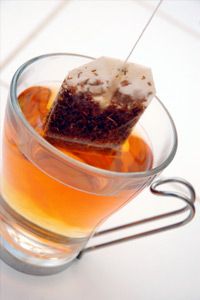Tea leaves its mark -- literally. You've probably noticed its nature to stain your mug, napkins, countertops and teeth with time. So, why does it stain so easily? Tea has the power to stain because it contains tannins. Tannins give tea its color and acidity, and even play a part in its flavor [source: Britannica]. While tannic tea stains can be troublesome, they do not have to be. For instance, staining with tea bags is a safe and inexpensive way to add color to your crafting and household projects.
Tea bags offer a natural alternative to chemical dyes or complex staining kits. Use your imagination to think of the objects in your home and daily life that might look better with a tint of color. Stumped for items to stain with tea bags? If you're still searching, look no further than this article. Here you will learn how to stain a variety of household materials with tea bags, starting with plain pieces of paper. You can use your tea-stained paper to give your journal and scrapbook pages a unique and antiquated look. Next you will learn how to stain white fabrics with tea bags. You can use this technique for all sorts of fabric crafts, from homey table linens and tea towels to embroidery and quilting projects and more. Finally, you will learn how to darken a light-colored piece of raw wood with tea bags instead of using harsh conventional wood stains.
Advertisement
Did these tea bag staining ideas get your brain brewing? Read the next page to find out how to start staining paper with tea bags.


